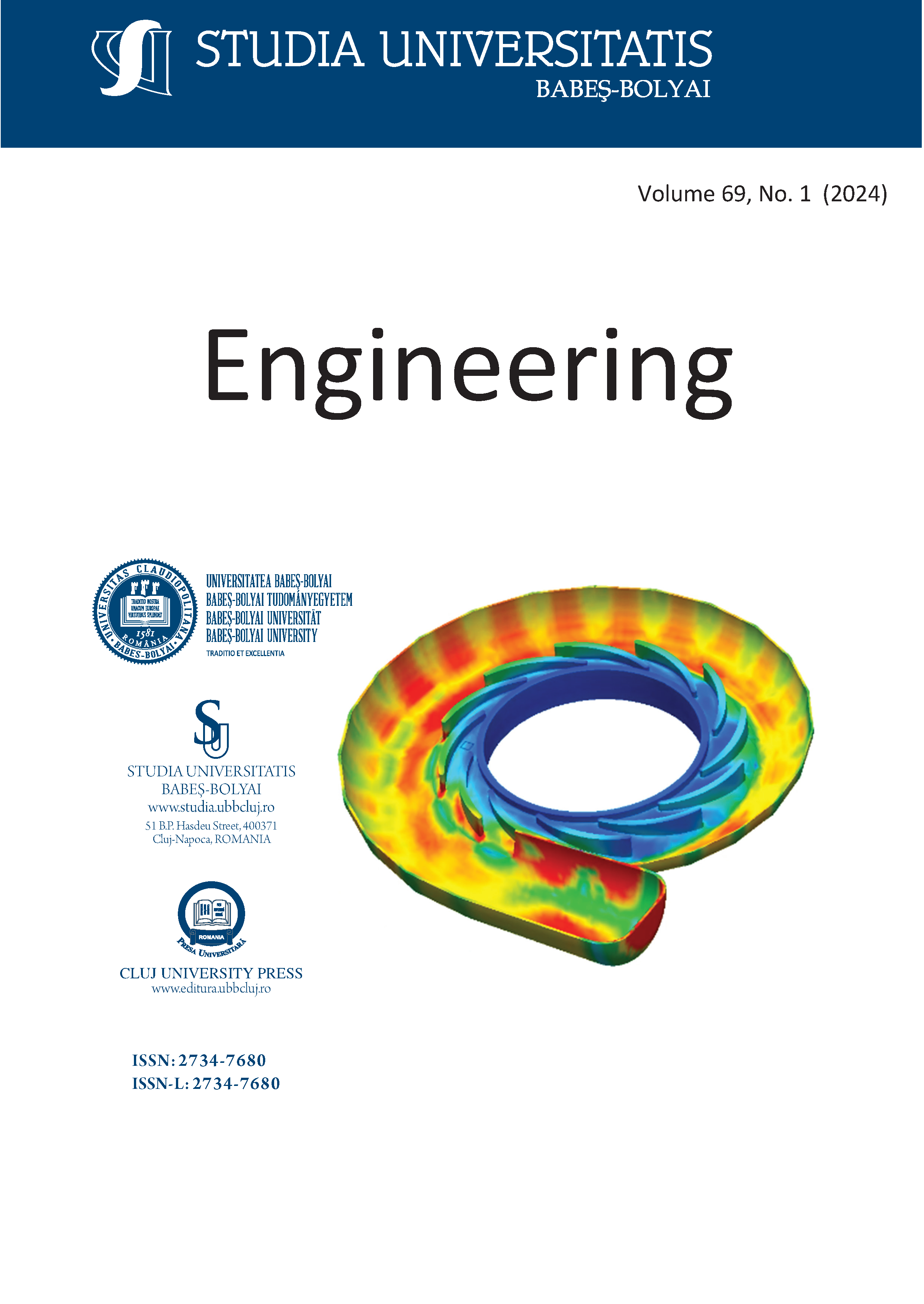Estimation of consumptive water use for Watermelon in Auchi, Nigeria
DOI:
https://doi.org/10.24193/subbeng.2024.1.20Keywords:
Crop water use, Watermelon production, CROPWAT, Watermelon, Auchi.Abstract
This study aims to estimate the consumptive water use (CWU) for watermelon production in Auchi, Edo State, Nigeria. The research was conducted over a period of eight months (March–October) and used data collected from the watermelon field at the Demonstration and Research Farm of Auchi Polytechnic, Auchi. The result of the experiment revealed the estimation of CWU and watermelon water requirements (CWR) of 175.9 mm and 195 mm for the 62-day (August to October) vegetation stage of watermelon, with a CROPWAT projected harvest on November 20, 2022. The finding also revealed that the mean annual consumptive water use for watermelon production was 520.7 mm. The mean seasonal water use for watermelon production was higher in the dry season (March to June, 488.7mm) than in the wet season (July to October, 390.6mm). However, based on this harvest date, the model predicted irrigation requirements of 23.1 mm and 59.4 mm in October and November. Additionally, this study offers proof that management strategies for water use efficiency and irrigation scheduling can dramatically lower water losses and boost efficiency. The findings of this study can be applied to the Auchi region’s water management decision-making procedures as well as to help watermelon farmers reduce their water consumption levels while maintaining output.
References
S.P. Harry, Origin and Emergence of the Sweet Dessert Watermelon, Citrullus lanatus, Journal of Annals and Botany, 116(2), 2015, pp.133–148.
FAOSTAT, FAO Statistical Database. Agriculture 4th March 2004. http://apps.fao.org/faostat/default.jsp (downloaded on 12.09.2012).
G. Anons, Nasarawa State Agricultural Development Programme, Annual Crop Area and yield Survey (CAYS), Lafia, Nasarawa State, Unpublished survey report, 2006.
FAO, 2001 Statistics of horticultural crops. faostat.fao.org/site/365/default.aspx (downloaded on 5.01.2013).
M.A. Husaini, A.A. Ramalan, M.K. Othman, Soil Moisture Regime Effect on the Performance of Watermelon under Varying Nitrogen levels in a Semi-Arid region, Journal of Applied Horticulture, 6 (2), 2004, pp. 72–75.
S. Bekele, K. Tilahun, Regulated deficit irrigation scheduling of onion in semi-arid region of Ethiopia, Agric Water Manage, 89, 2007, pp. 148-152.
A. Phocaides Technical Handbook on Pressurized Irrigation Techniques. FAO, Rome, 2000.
A. Kadayifci, G.I. Tuylu, Y. Ucar, B. Carmak, Effects of Mulch and Irrigation Water Amounts on Lettuce’s Yield, Evaporation, Transpiration and Soil Evaporation in Isparta Location, Turkey. Journal of biological sciences, 4(6), 2004, pp. 751-755.
P.Hembram, C. Suibudhi, R. Subudhi, Water and Irrigation Requirement for Watermelon (Citrullus lanatus) Crop of North Central Plateau Zone of Odisha, South Asian Research Journal of Biology and Applied Biosciences, 2(4), 2020, pp. 1-6.
A.H. Orta, Y. Erdem, T. Erdem, Crop water stress index for watermelon, Scientia Horticulturae, 98, 2002, pp. 121–130.
T. Poos, E. Varju, Mass Transfer Coefficient for Water Evaporation by Theoretical and Empirical Correlations, International Journal of Heat and Mass Transfer, 153, 2020, pp.3-8.
J. Aronson, J. Kigel, A. Shmida, J. Klein, Adaptive phenology of desert and mediterranean populations of annual plants grown with and without water-stress, Oecologia, 89(7). 1992, pp.17-26.
J.M. Delarco, A. Escudero, M.V. Garrido, Effects of site characteristics on nitrogen retranslocation from senescing leaves, Ecology, 72(5), 2020, pp. 701-708.
Downloads
Published
How to Cite
Issue
Section
License
Copyright (c) 2024 Studia Universitatis Babeș-Bolyai Engineering

This work is licensed under a Creative Commons Attribution-NonCommercial-NoDerivatives 4.0 International License.





 © Studia Universitatis Babeş-Bolyai Engineering. Published by Babeș-Bolyai University.
© Studia Universitatis Babeş-Bolyai Engineering. Published by Babeș-Bolyai University.